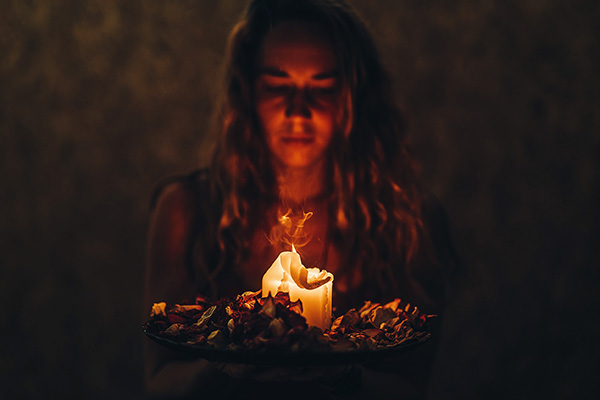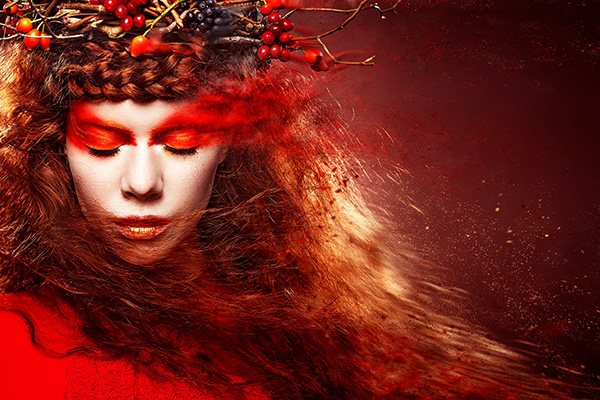ceremony
What It Means To Align With Your Higher Self
 The term “higher self” is a term often used in spirituality, metaphysics, and psychic work, but it can be very confusing. What exactly is it? Is it our subconscious, our conscience, our alter ego, our soul, our spirit?
The term “higher self” is a term often used in spirituality, metaphysics, and psychic work, but it can be very confusing. What exactly is it? Is it our subconscious, our conscience, our alter ego, our soul, our spirit?
While these aspects are all related in some way to the higher self, it’s best understood as the most enlightened and transcendent part of our being.
Our soul or spirit is the conscious, evolving part of us in this lifetime, while the higher self is our soul’s highest potential. It is our divine blueprint and our eternal spiritual essence that exists beyond our physical self in the non-physical. It’s the timeless, eternal part of us that embodies the divine essence of who we are.
While the incarnated aspect of soul is the conscious experiencer throughout our lifetime, the higher self is the permanent aspect of the soul that exists in the higher realms.
The higher self is not a separate personality or individual being, but a deeply integrated, higher foundation of our soul. It is like a spiritual archive of all the wisdom, experiences and lessons accumulated from our past lives, as well as our soul contracts and higher purpose for this lifetime, serving as a blueprint for our soul’s evolution and life journey. It reflects the highest aspects of our being.
When we connect with our higher self, we align with this elevated aspect of who we truly are and what we intend to accomplish in this life and the next. This connection gives us clarity and insight into our soul’s path. It allows us to see life from a higher perspective and guides us to make choices that promote personal and spiritual growth. Connecting with the higher self helps us navigate life’s challenges with greater ease and purpose, allowing our soul to evolve and expand.
Honor Your Pagan Heritage This Halloween
 Samhain holds special significance for those who practiced paganism in a past life, especially those who were involved in magical practices as seers, soothsayers, druids, and witches.
Samhain holds special significance for those who practiced paganism in a past life, especially those who were involved in magical practices as seers, soothsayers, druids, and witches.
For us, this time of year evokes a deep sense of nostalgia, spiritual reorientation, and a return to ancient wisdom as the veil between worlds thins and we reconnect with our ancestors and the spirit realms.
Samhain is an ancient Celtic festival marking the end of the harvest season and the beginning of winter, traditionally celebrated from October 31 to November 1. It is one of the four great Gaelic seasonal festivals, along with Imbolc (February 1), Beltane (May 1), and Lughnasadh (August 1).
In Celtic tradition, Samhain (pronounced “sow-in”) is a liminal time when the boundary between the physical and spiritual worlds is thinner, allowing the spirits of our deceased loved ones, ancestors, and other spirits to cross over more easily.
In ancient times people would light fires and wear costumes to ward off harmful spirits, while also honoring their ancestors with offerings of food and drink.
Samhain is considered the origin of modern Halloween traditions, although Halloween has evolved and incorporated elements from other cultures to become a mostly secular and commercial holiday. For Neopagans and Wiccans, Samhain remains an important festival for honoring the dead, celebrating the cycle of life, death, and rebirth, and connecting more deeply with the spirit realm.
Samhain Ritual For Personal Tranformation
 One of the most mystical and energetically powerful times in the metaphysical calendar is upon us again tomorrow. Samhain, also known as the Celtic New Year, is a sacred festival celebrated on October 31st.
One of the most mystical and energetically powerful times in the metaphysical calendar is upon us again tomorrow. Samhain, also known as the Celtic New Year, is a sacred festival celebrated on October 31st.
Samhain traditionally marks the end of the harvest season and the beginning of the winter. It is a time to honor our ancestors, reflect on the thinning veil between the physical and spirit realms, and set intentions for the new annual cycle ahead.
Samhain holds special significance for those who are attuned to the cycles of nature and the spirit world. Traditionally, the boundaries between the physical and spirit realms were believed to be at their thinnest on this night.
The Celts and Norse in particular saw it as a time when communication with ancestors, departed loved ones and the gods was most possible, providing guidance for the future. For the Vikings and other northern European cultures, Samhain was also a time for divination. Runes, symbols of cosmic wisdom, were often used to gain insight into the coming year.
This year, Samhain carries a particularly powerful energy as it coincides with the Waning Crescent Moon’s transition from Libra to Scorpio. This last lunar phase before renewal invites us to release what no longer serves us, and its journey from the balanced, harmonious energy of Libra into the intense, transformative depths of Scorpio will amplify this process.
Libra’s influence encourages reflection on relationships, inner balance, and the need for harmony, while Scorpio’s energy propels us toward deeper introspection, emotional transformation, and embracing the mysteries of life, death, and rebirth.
How To Use A Wand In Your Energy Work
 It is not widely known that a magic wand is so much more than a mere fantasy accessory in popular stories like the Harry Potter series andThe Chronicles of Narnia.
It is not widely known that a magic wand is so much more than a mere fantasy accessory in popular stories like the Harry Potter series andThe Chronicles of Narnia.
While popular culture has certainly cast wands in a fun, magical light, their true potential as metaphysical tools in real-world spiritual and energy work is less known and mostly underestimated.
Far from being a fictional artifact, a wand has traditionally served as a conduit for directing intention and channeling energy. When used with respect and purpose, a “magic” wand can be a vital tool in one’s metaphysical practice.
I view my wand as an energy tool to harness and direct intention as a means to bring about change in myself, another person, a pet, or a situation. Whether I’m working directly with someone in a healing session or using it remotely with a photo or personal object, my wand helps me focus healing energy to address blocks, wounds, or even negativity.
In a healing session, I use the wand to direct energy to where it’s needed most. This may mean helping someone release emotional blocks, alleviate physical pain, or transform negative energy.
Wands have a rich history in various cultures and have been used in many ancient civilizations. In ancient Egypt, for example, staffs and wands were used by priests and deities as symbols of authority and power. These objects were decorated with mystical symbols and believed to have protective and healing properties. Similarly, in Mesopotamia, priests and shamans used wands in religious rituals and ceremonies.
How To Deal With Spirit Presence In Your Home
 Spirit energies are around us all the time in all shapes and forms. Many people have experienced, or at least know someone who has, a spirit presence or paranormal activity in their home.
Spirit energies are around us all the time in all shapes and forms. Many people have experienced, or at least know someone who has, a spirit presence or paranormal activity in their home.
These encounters can range from subtle to intense, and the nature of the experience often varies greatly depending on the person’s beliefs, fears, and openness to the supernatural.
For some, the presence of a spirit is a source of terror, while for others it is a comfort, like being in the presence of an old friend. Then there are those who scoff and laugh at the very idea that a ghost could exist.
These varied responses highlight an important question: why do people have such different experiences with spirits?
In my experience, it depends on two main factors: a person’s beliefs and attitudes about spirituality and the supernatural, and the nature of the spirit presence itself, whether it is benevolent or malevolent.
My grandmother came to me within three days of her death to tell me she was okay. She gave me a sense of peace and I didn’t see her again. Years later, my mother also came to me to tell me that she was okay and that all was well where she was. It was also a one-time visit.
But with my stepson, who committed suicide, and my father, it was different. He started showing up at his former house (he had left a wife and two beautiful boys) on a regular basis. He would turn on the lights or the faucet. In the middle of the night she would hear our grandchildren talking and giggling in one of their rooms. They were only two and three years old when he died. She went to investigate, thinking they were up to no good, but only one of them was in the room. When she asked who he was talking to, her boy said, “Daddy was here.”
Invoking The Power And Beauty Of Freya
 The goddess Freya has a special place in my spiritual self-care routine. I often turn to her when I need extra guidance and support.
The goddess Freya has a special place in my spiritual self-care routine. I often turn to her when I need extra guidance and support.
Freya is the ancient Norse goddess of love, beauty, fertility, and war. She is one of the most important deities in Norse mythology, embodying the ultimate ancient archetype for ‘girl power’ and ‘boss lady’ energy.
She is traditionally revered for her deep wisdom, boundless compassion, and fierce protection. Invoking her divine feminine power has brought much transformative and empowering energy to many aspects of my life.
In Norse folklore, Freya rides a chariot drawn by two large, powerful cats and is often depicted wearing the Brísingamen necklace, a symbol of her power and beauty.
The Brísingamen was created by four dwarves known for their exceptional craftsmanship. The necklace symbolizes beauty, desire and the power of attraction. It also represents Freyja’s connection to the earth and its fertility.
Freya is the leader of the Valkyries, the warrior maidens who choose those who may die and those who may live in battle. Freyja is said to receive half of the slain warriors in her heavenly field, Fólkvangr, while the other half go to Odin’s hall, Valhalla.
This dual role highlights her authority and revered status among the gods, bridging the realms of life and death. The Valkyries, under her guidance, serve not only as fierce selectors of the fallen but also as protectors and guides for these chosen souls, ensuring their honored place in the afterlife.
How To Navigate The Chaos Like A Champ
 The physical life adventure we signed up for before we were born has many twists and turns. From our careers and relationships to personal health and world events.
The physical life adventure we signed up for before we were born has many twists and turns. From our careers and relationships to personal health and world events.
While these ups and downs of life and love are exactly what we came here to experience for our personal enlightenment and soul evolution, they can sometimes throw us into moments of chaos, frustration, anxiety and even instense despair.
The key to not becoming disoriented or deflated in these difficult moments is to always remember why we are here in the first place, no matter how crazy things may get. Every time we face adversity or have to overcome setbacks and obstacles, we are making progress on our amazing soul journey.
Embracing the dynamic and sometimes very challenging nature of our existence is essential to fulfilling our spiritual mission. Staying balanced in an ever-changing environment is not just a possibility – it is an exciting opportunity for self-discovery and spiritual empowerment.
Change and uncertainty are inevitable. Developing a mindset of flexibility and adaptability can help you navigate the chaos with greater ease. Surrender to the knowledge that you can’t control everything, but you can control your thoughts, mindset and reactions.Amid chaos and despair, remember: every setback is a step forward in your amazing spiritual odyssey!
Three days ago, a deer collided with my car two hours from home. It did not survive and my vehicle is no longer drivable. The hardest thing for me was the grief of killing one of God’s beautiful creatures. Why did I not see it earlier and react sooner?